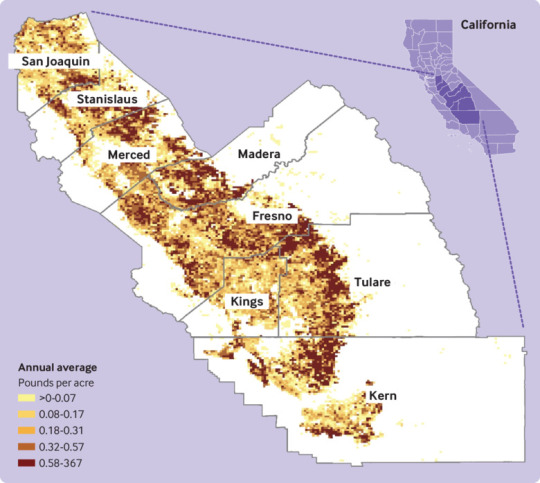#1.12 Through the Valley of Death
Text










—Superman and Lois, “O Mother, Where Art Thou?” + “Through the Valley of Death”
#Clark Kent#Tyler Hoechlin#Lois Lane#Bitsie Tulloch#Kiss | Clark and Lois#Clark Carries Lois#Hug | Clark and Lois#Holding Hands | Clark and Lois#Touching Hair | Clark and Lois#Parallel#1.10 O Mother Where Art Thou?#1.12 Through the Valley of Death#Clois#Superman & Lois
108 notes
·
View notes
Photo






Superman & Lois: Favourite Episodes
1.12 Through the Valley of Death
#superman and lois#supermanandloisedit#dcedit#dcmultiverse#dcfilmblr#dcfilms#dctv#dctvedit#dctvgifs#arrowverse#tyler hoechlin#thoechlinedit#bitsie tulloch#supermanedit#flashing
124 notes
·
View notes
Photo






Lois sent me to help you. She still believes in you. I met your boys, and they believe in you, too. And let me tell you something, man, I know what it means to lose the people you love. That pain you feel right now, that is nothing compared to what happens if you lose them. Right now, you got a chance to fight. Do not let that bastard take you away from your family.
SUPERMAN AND LOIS
— 1.12 “Through the Valley of the Death”
#superman and lois#dcedit#supermanandloisedit#userlar#usermichi#tusershay#alexjulies#userpavi#jokerous#useraurore#userjessica#underbetelgeuse#ours#by tom
362 notes
·
View notes
Photo

Superman and Lois 1.12 Through the Valley of Death
↳ 2,556 1080p logofree screencaps
Superman and Lois 1.13 Fail Safe
↳ 2,538 1080p logofree screencaps
#superman and lois#supermanandloisedit#dcedit#clark kent#lois lane#scnet: superman and lois#superman and lois season 1#tv shows#capped by raina
21 notes
·
View notes
Text






1.12 Through the Valley of Death
18 notes
·
View notes
Photo

Superman and Lois - Episode 1.12 - Through the Valley of Death - Promo + Press Release https://www.spoilertv.com/2021/06/superman-and-lois-episode-112-promo.html
2 notes
·
View notes
Text
Aaron Hotchner // Thomas Gibson
David Rossi // Joe Mantegna
Derek Morgan // Shemar Moore
Emily Prentiss // Paget Brewster
JJ Jareau // AJ Cook
Luke Alvez // Adam Rodriguez
Matt Simmons // Daniel Henney
Penelope Garcia // Kirsten Vangsness
Spencer Reid // Matthew Gray Gubler
Tara Lewis // Aisha Tyler
Criminal Minds
Season 1:
1.01 Extreme Aggressor
1.02 Compulsion
1.03 Won't Get Fooled Again
1.04 Plain Sight
1.05 Broken Mirror
1.06 L.D.S.K.
1.07 The Fox
1.08 Natural Born Killer
1.09 Derailed
1.10 The Popular Kids
1.11 Blood Hungry
1.12 What Fresh Hell?
1.13 Poison
1.14 Riding the Lightning
1.15 Unfinished Business
1.16 The Tribe
1.17 A Real Rain
1.18 Somebody's Watching
1.19 Machismo
1.20 Charm and Harm
1.21 Secrets and Lies
1.22 The Fisher King: Part 1
Season 2:
2.01 The Fisher King: Part 2
2.02 P911
2.03 The Perfect Storm
2.04 Psychodrama
2.05 Aftermath
2.06 The Boogeyman
2.07 North Mammon
2.08 Empty Planet
2.09 The Last Word
2.10 Lessons Learned
2.11 Sex, Birth, Death
2.12 Profiler, Profiled
2.13 No Way Out
2.14 The Big Game
2.15 Revelations
2.16 Fear and Loathing
2.17 Distress
2.18 Jones
2.19 Ashes and Dust
2.20 Honor Among Thieves
2.21 Open Season
2.22 Legacy
2.23 No Way Out, Part 2: The Evilution of Frank
Season 3:
3.01 Doubt
3.02 In Name and Blood
3.03 Scared to Death
3.04 Children of the Dark
3.05 Seven Seconds
3.06 About Face
3.07 Identity
3.08 Lucky
3.09 Penelope
3.10 True Night
3.11 Birthright
3.12 3rd Life
3.13 Limelight
3.14 Damaged
3.15 A Higher Power
3.16 Elephant's Memory
3.17 In Heat
3.18 The Crossing
3.19 Tabula Rasa
3.20 Lo-Fi
Season 4:
4.01 Mayhem
4.02 The Angel Maker
4.03 Minimal Loss
4.04 Paradise
4.05 Catching Out
4.06 The Instincts
4.07 Memoriam
4.08 Masterpiece
4.09 52 Pickup
4.10 Brothers in Arms
4.11 Normal
4.12 Soul Mates
4.13 Bloodline
4.14 Cold Comfort
4.15 Zoe's Reprise
4.16 Pleasure Is My Business
4.17 Demonology
4.18 Omnivore
4.19 House on Fire
4.20 Conflicted
4.21 A Shade of Gray
4.22 The Big Wheel
4.23 Roadkill
4.24 Amplification
4.25 To Hell...
4.26 ... And Back
Season 5:
5.01 Faceless, Nameless
5.02 Haunted
5.03 Reckoner
5.04 Hopeless
5.05 Cradle to Grave
5.06 The Eyes Have It
5.07 The Performer
5.08 Outfoxed
5.09 100
5.10 The Slave of Duty
5.11 Retaliation
5.12 The Uncanny Valley
5.13 Risky Business
5.14 Parasite
5.15 Public Enemy
5.16 Mosley Lane
5.17 Solitary Man
5.18 The Fight
5.19 Rite of Passage
5.20 ...A Thousand Words
5.21 Exit Wounds
5.22 The Internet Is Forever
5.23 Our Darkest Hour
Season 6:
6.01 The Longest Night
6.02 JJ
6.03 Remembrance of Things Past
6.04 Compromising Positions
6.05 Safe Haven
6.06 Devil's Night
6.07 Middle Man
6.08 Reflection of Desire
6.09 Into the Woods
6.10 What Happens at Home...
6.11 25 to Life
6.12 Corazon
6.13 The Thirteenth Step
6.14 Sense Memory
6.15 Today I Do
6.16 Coda
6.17 Valhalla
6.18 Lauren
6.19 With Friends Like These
6.20 Hanley Waters
6.21 The Stranger
6.22 Out of the Light
6.23 Big Sea
6.24 Supply and Demand
Season 7:
7.01 It Takes a Village
7.02 Proof
7.03 Dorado Falls
7.04 Painless
7.05 From Childhood's Hour
7.06 Epilogue
7.07 There's No Place Like Home
7.08 Hope
7.09 Self Fulfilling Prophecy
7.10 The Bittersweet Science
7.11 True Genius
7.12 Unknown Subject
7.13 Snake Eyes
7.14 Closing Time
7.15 A Thin Line
7.16 A Family Affair
7.17 I Love You, Tommy Brown
7.18 Foundation
7.19 Heathridge Manor
7.20 The Company
7.21 Divining Rod
7.22 Profiling 101
7.23 Hit
7.24 Run
Season 8:
8.01 The Silencer
8.02 The Pact
8.03 Through the Looking Glass
8.04 God Complex
8.05 The Good Earth
8.06 The Apprenticeship
8.07 The Fallen
8.08 The Wheels on the Bus...
8.09 Magnificent Light
8.10 The Lesson
8.11 Perennials
8.12 Zugzwang
8.13 Magnum Opus
8.14 All That Remains
8.15 Broken
8.16 Carbon Copy
8.17 The Gathering
8.18 Restoration
8.19 Pay It Forward
8.20 Alchemy
8.21 Nanny Dearest
8.22 #6
8.23 Brothers Hotchner
8.24 The Replicator
Season 9:
9.01 The Inspiration Part 1
9.02 The Inspiration Part 2
9.03 Final Shot
9.04 To Bear Witness
9.05 Route 66
9.06 In The Blood
9.07 Gatekeeper
9.08 The Return
9.09 Strange Fruit
9.10 The Caller
9.11 Bully
9.12 The Black Queen
9.13 The Road Home
9.14 200
9.15 Mr. & Mrs. Anderson
9.16 Gabby
9.17 Persuasion
9.18 Rabid
9.19 The Edge of Winter
9.20 Blood Relations
9.21 What Happens in Mecklinburg
9.22 Fatal
9.23 Angels
9.24 Demons
Season 10:
10.01 X
10.02 Burn
10.03 A Thousand Suns
10.04 The Itch
10.05 Boxed In
10.06 If the Shoe Fits
10.07 Hashtag
10.08 The Boys of Sudworth Place
10.09 Fate
10.10 Amelia Porter
10.11 The Forever People
10.12 Anonymous
10.13 Nelson's Sparrow
10.14 Hero Worship
10.15 Scream
10.16 Lockdown
10.17 Breath Play
10.18 Rock Creek Park
10.19 Beyond Borders
10.20 A Place at the Table
10.21 Mr. Scratch
10.22 Protection
10.23 The Hunt
#tags masterlist#disregard this post just need it for myself#so so sorry if the read more doesnt work it's giving me issues
2 notes
·
View notes
Text
Superman and Lois - Episode 1.12 - Through the Valley of Death - Promo
Superman and Lois – Episode 1.12 – Through the Valley of Death – Promo
Promo
Source link

View On WordPress
0 notes
Photo

New Post has been published on https://fitnesshealthyoga.com/prenatal-and-infant-exposure-to-ambient-pesticides-and-autism-spectrum-disorder-in-children-population-based-case-control-study/
Prenatal and infant exposure to ambient pesticides and autism spectrum disorder in children: population based case-control study

Abstract
Objective To examine associations between early developmental exposure to ambient pesticides and autism spectrum disorder.
Design Population based case-control study.
Setting California’s main agricultural region, Central Valley, using 1998-2010 birth data from the Office of Vital Statistics.
Population 2961 individuals with a diagnosis of autism spectrum disorder based on the Diagnostic and Statistical Manual of Mental Disorders, fourth edition, revised (up to 31 December 2013), including 445 with intellectual disability comorbidity, were identified through records maintained at the California Department of Developmental Services and linked to their birth records. Controls derived from birth records were matched to cases 10:1 by sex and birth year.
Exposure Data from California state mandated Pesticide Use Reporting were integrated into a geographic information system tool to estimate prenatal and infant exposures to pesticides (measured as pounds of pesticides applied per acre/month within 2000 m from the maternal residence). 11 high use pesticides were selected for examination a priori according to previous evidence of neurodevelopmental toxicity in vivo or in vitro (exposure defined as ever v never for each pesticide during specific developmental periods).
Main outcome measure Odds ratios and 95% confidence intervals using multivariable logistic regression were used to assess associations between pesticide exposure and autism spectrum disorder (with or without intellectual disabilities) in offspring, adjusting for confounders.
Results Risk of autism spectrum disorder was associated with prenatal exposure to glyphosate (odds ratio 1.16, 95% confidence interval 1.06 to 1.27), chlorpyrifos (1.13, 1.05 to 1.23), diazinon (1.11, 1.01 to 1.21), malathion (1.11, 1.01 to 1.22), avermectin (1.12, 1.04 to 1.22), and permethrin (1.10, 1.01 to 1.20). For autism spectrum disorder with intellectual disability, estimated odds ratios were higher (by about 30%) for prenatal exposure to glyphosate (1.33, 1.05 to 1.69), chlorpyrifos (1.27, 1.04 to 1.56), diazinon (1.41, 1.15 to 1.73), permethrin (1.46, 1.20 to 1.78), methyl bromide (1.33, 1.07 to 1.64), and myclobutanil (1.32, 1.09 to 1.60); exposure in the first year of life increased the odds for the disorder with comorbid intellectual disability by up to 50% for some pesticide substances.
Conclusion Findings suggest that an offspring’s risk of autism spectrum disorder increases following prenatal exposure to ambient pesticides within 2000 m of their mother’s residence during pregnancy, compared with offspring of women from the same agricultural region without such exposure. Infant exposure could further increase risks for autism spectrum disorder with comorbid intellectual disability.
Introduction
Autism spectrum disorder comprises severe developmental disorders characterized by atypical socialization, and restricted and repetitive behaviors and interests. Genetics have a role,12 with heritability estimates of 38%3 to 83%,4 but more information is needed about environmental factors operating in early development.3 Prenatal exposures to several types of pesticides have been associated with impaired neurodevelopment,5678 and the few studies that have considered autism spectrum disorder have suggested that organophosphates9 and organochlorines1011 could increase risk.
Experimental in vivo and in vitro studies of autism121314 suggested changes in neuroprotein levels, altered gene expression, and neurobehavioral abnormalities after exposure to certain pesticides.1214 For example, when the organophosphate chlorpyrifos was administered prenatally at subtoxic levels to a mouse model that displays several behavioral traits related to the autism spectrum, male offspring showed delayed motor function maturation and enhanced behavioral features associated with autism spectrum disorder.13
So far, knowledge about pesticide exposure in the real world and risk of autism spectrum disorder is scarce. In this large population based study, we assess prenatal and infant exposure to high use pesticides, which have been a priori selected on the basis of previous evidence for their experimental neurodevelopmental toxicity. Use of these pesticides in an agriculturally intensive region of California, United States, were recorded in the California state mandated Pesticide Use Reporting (CA-PUR) program. These records were integrated in our geographic information system tool, which links exposure records to addresses from birth records of the study population.
Methods
Study design and population
Records of autism spectrum disorder cases were retrieved from the registry maintained at the California Department of Developmental Services (DDS), based on diagnostic data collected by contracted regional centers (https://www.dds.ca.gov/RC/RCList.cfm). We included all individuals with a primary diagnosis of autistic disorder (code 299.00) reported on the DDS client development evaluation report, which implements criteria of the Diagnostic and Statistical Manual of Mental Disorders, fourth edition, revised (DSM-IV-R)15 up to 31 December 2013 (“autistic disorder” is the most severe diagnosis of autism spectrum disorder under DSM-IV criteria).16 Validation studies have established the reliability and validity of the DDS client development evaluation report in California.17 Eligibility for DDS services does not depend on citizenship or financial status, and services are available to all children. We used California birth records data from the Office of Vital Statistics to create a statewide case-control sample of 1998-2010 births. We matched DDS case records to birth records using a probabilistic linkage18 based on child and parental identifiers including first and last name, birth date, and sex. We estimated the probability that two records were for the same person by assigning total linkage scores generated for matches with the National Program of Cancer Registries Link Plus software (linkage rate 86.3%).19 We manually checked cases with borderline scores; the main reason for non-linkage was missing information on birth or DDS records.
Randomly selected controls from birth records were matched to each case 10:1 by birth year and sex. From the statewide sample (n=33 921 cases, n=339 210 controls), we excluded 3401 (10%) case records and 42 519 (12.5%) control records with missing, implausible, or non-viable gestational ages (included range 147-322 days) or birth weights (included range 500-6800 g), and non-singleton births. We also excluded 1296 (0.4%) controls who died before age 6 (identified by linkage to the California death registry).18 We restricted our sample to the eight major agricultural counties (San Joaquin, Stanislaus, Merced, Madera, Fresno, Kings, Tulare, and Kern); 38 331 participants (2961 cases and 35 370 controls) resided here at the time of birth and diagnosis. Although the CA-PUR covers the state of California, the mandatory reporting reflects agricultural use pesticides (see supplemental eMethods), which has a different spatial resolution from other pesticide use recorded in the Pesticide Use Reporting system. In urban areas (such as on structures and right of way applications or near roadway applications), non-agricultural pesticide use is most common but this is only reportable to the Pesticide Use Reporting at the county level (low spatial resolution); thus variables that estimate pesticide exposure for urban areas would be expected to result in markedly higher exposure misclassification.
We distinguished cases according to comorbid intellectual disability (in our study period recorded as “mental retardation” and diagnosed according to DSM-IV criteria corresponding to ICD-9 (international classification of diseases, 9th revision)). Information on pregnancy characteristics including gestational age, birth weight, pregnancy complications, and sociodemographics (maternal/paternal age, race/ethnicity, education) was retrieved from birth records.
Pesticide exposure
Residential birth addresses, as listed on birth certificates, were geocoded by our open source geocoder (historical address information was not available).20 CA-PUR21 includes information on all agricultural pesticide applications with the date, location, and amount of active ingredient applied (see supplemental eMethods). CA-PUR reports were combined with land use survey information from the California Department of Water Resources, which provides the location of specific crops, in a geographic information system-based computer model to estimate pesticide exposure from agricultural applications (technical details published elsewhere22). Briefly, for each pesticide, we summed pounds applied per acre (1 acre=4046.9 m2) per month within a 2000 m radius of each residential address. Our geographic information system tool generated calendar month averages, which we then used to generate developmental period-specific averages (for the three months before gestation, each month of gestation/gestation, and the first year of life) using weights according to the developmental period/gestational days covered by a calendar month. For sensitivity analyses, we also used a 2500 m radius in the same manner. The length of the gestational period for controls was truncated to the length of the matched cases to ensure comparable exposure periods. We defined exposure as any versus none to a specific substance during a specific developmental period; we chose this method to avoid making assumptions about the relative toxicity of agents, shape of the association, or the exposure potential due to presence at the time of application. It is, however, possible that this approach generates non-differential exposure error and underestimates effects.
We a priori decided to select from among 25 most used pesticide substances with peer reviewed published reports of neurodevelopmental interference, leaving 11 pesticides for analysis (classifications shown in eTable 1). These substances included glyphosate,23242526 chlorpyrifos,927 diazinon,282930 acephate,313233 malathion,333435 permethrin,69 bifenthrin,93336 methyl bromide,3738 imidacloprid,3940 avermectin,4142 and myclobutanil.1443
Statistical analysis
Tetrachoric/Spearman correlations (binary/continuous) of pesticide exposures were examined within and between developmental periods. Pesticide use over time was plotted; maps were drawn using ArcGIS 10.4 (ESRI). Odds ratios and 95% confidence intervals were estimated for associations between developmental period-specific pesticide exposures and autism spectrum disorder with unconditional logistic regression. We adjusted all models for the matching variables sex and year of birth, and selected potential confounders on the basis of previous knowledge.1044 These potential confounders included maternal age, indicators of socioeconomic status (that is, maternal race/ethnicity and education), and nitrogen oxides44 (NOx; pregnancy average) as a marker of traffic related air pollution. For air pollution assessment, we used the California Line Source (CALINE4) emissions model, a modified Gaussian dispersion model of local gasoline and diesel vehicles emissions estimated for 1500 m distance from the residential address based on traffic volume, roadway geometry, vehicle emission rates, and meteorological conditions (wind speed/direction, temperature, atmospheric stability, and mixing heights).454647
While we estimated parameters for each pesticide in separate models because of collinearities, we also explored multi-pesticide models for two or three selected pesticides for substances that showed associations with autism spectrum disorder in single pesticide models and belonged to different chemical classes. For those pesticides with more than one substance per class (organophosphates, pyrethroids), we selected a representative chemical (eg, chlorpyrifos for organophosphates) based on the strongest previous evidence for neurodevelopmental toxicity.48 To further adjust for coexposure, we adjusted for 11 pesticides in logistic models; in sensitivity analyses, a semi-Bayesian approach was used as described elsewhere.49 There was little difference in effect estimates between the fully adjusted conventional logistic and the hierarchical modeling approach, so we present the logistic modeling results only.495051
We also stratified analyses by autism spectrum disorder with or without comorbid intellectual disability to assess risk in more severely impaired individuals separately. We conducted sensitivity analyses adjusting for additional variables including maternal birth place (US v non-US); residence in urban or rural areas52; socioeconomic status categories based on census data related to income, education, and occupation53; source of payment for delivery (indicator of socioeconomic status); and preterm birth. None of these variables changed the estimates of interest by more than 5%, thus they were not retained in final models.54 Sensitivity analyses also included restricting to term births, and stratifying by sex. Analyses were conducted with SAS 9.3.
Patient and public involvement
No patients were directly involved in setting the research question or the outcome measures, nor were they involved in developing plans for design or implementation of the study. However, the study responds to concerns by the families of patients with autism that environmental toxic exposures in early life are suspected to contribute to risks for autism spectrum disorder. There are plans to disseminate the results of the research to the relevant patient community. Affected families are thanked in the acknowledgments.
Results
Baseline characteristics and exposure
In our sample, individuals with autism spectrum disorder were mainly male (>80%), had older mothers, and had mothers who had completed more years of education than control mothers (table 1). Correlations between several pesticides in the same or across developmental periods were moderate to high (rt=0.45-0.85; eTable 2). In figure 1, we present a map of the study area showing pesticide applications for the most used substance glyphosate as an example.
Table 1
Study population characteristics by autism spectrum disorder status and population controls in the Central Valley, CA*

Fig 1
Pesticide application of glyphosate in Central Valley, CA, 1998-2010
Association between autism spectrum disorder and exposure to pesticides, coadjusted for developmental period exposures
For all cases of autism spectrum disorder combined, coadjusted for developmental period-specific exposures (three months before pregnancy, during pregnancy, and during the first year of life), odds ratios were increased for pregnancy exposure to most substances. Associations were strongest for chlorpyrifos (1.15; 95% confidence interval 1.02 to 1.29), diazinon (1.14; 1.02 to 1.28), and avermectin (1.14; 1.03 to 1.26). Related to first year of life exposure, most odds ratios were close to one, and only the odds ratios for bifenthrin, malathion, and glyphosates were slightly raised (table 2). For autism spectrum disorder with intellectual disability comorbidity, coadjustment for the exposures in all three periods resulted in attenuated effect estimates during and before pregnancy, while odds ratios became more pronounced for exposures in the first year of life, particularly for glyphosate (1.60; 1.09 to 2.34), diazinon (1.45; 1.11 to 1.89), malathion (1.29; 1.00 to 1.65), and bifenthrin (1.33; 1.03 to 1.72; table 2). Exposure in the three months before pregnancy (indicating exposure just before or around conception) had weaker associations with autism spectrum disorder than exposure during pregnancy or the first year of life, after exposure period coadjustment (table 2, eTable 3). We saw variation in exposure between developmental periods to each pesticide considered, likely due to annual and seasonal changes in application rates (eg, for permethrin, among the controls, 1.5% were solely exposed in the three months before pregnancy, 4.8% were exposed only during pregnancy, 7.6% were exposed only in the first year of life, and 12.1% were exposed in all three periods; eTable 4). For exposures by trimester, no clear patterns were identified (data not shown).
Table 2
Odds ratios and 95% confidence intervals* for association between pesticide exposure and all cases of autism spectrum disorder (ASD) combined and those with intellectual disability comorbidity, coadjusted for developmental period of pesticide exposure, by pesticide substance
Association between prenatal or infant exposure to pesticides and autism spectrum disorder
For all cases of autism spectrum disorder, considering the pregnancy and infant exposures separately, exposure during pregnancy was associated with about a 10% increase in adjusted odds ratios for glyphosate (1.16; 95% confidence interval 1.06 to 1.27), chlorpyrifos (1.13; 1.05 to 1.23), diazinon (1.11; 1.01 to 1.21), malathion (1.11; 1.01 to 1.22), avermectin (1.12; 1.04 to 1.22), and permethrin (1.10; 1.01 to 1.20). Also adjusting for all 11 pesticides resulted in attenuation of associations. However, odds ratios for glyphosate and avermectin remained elevated for exposure during pregnancy, while odds ratios for the remaining pesticides were close to one, and the odds ratio for imidacloprid fell below one (table 3).
Table 3
Odds ratios and 95% confidence intervals for association between all cases of autism spectrum disorder combined and pesticide exposure during pregnancy and first year of life in logistic regression models, by pesticide substance
Association between prenatal or infant exposure to pesticide and autism spectrum disorder with intellectual disability
Among cases of autism spectrum disorder with intellectual disability, odds ratios had greater increases (by 30-40%) in pregnancy and infancy for glyphosate, chlorpyrifos, diazinon, permethrin, methyl bromide, and myclobutanil when considering the pregnancy and infant periods separately (table 4). Among cases without intellectual disability (about 85% of cases), estimated odds ratios were similar to those reported for the models analyzing all cases of autism spectrum disorder (eTable 5).
Table 4
Odds ratios and 95% confidence intervals for association between autism spectrum disorder with intellectual disability comorbidity and exposure to pesticides during pregnancy and first year of life in logistic regression models
Multi-pesticide models
In multi-pesticide models with two or three pesticides, most odds ratios were above one for all cases of autism spectrum disorder combined even though several confidence intervals widened (table 5). For autism spectrum disorder with intellectual disability and pesticide exposure during the first year of life, estimated associations were pronounced for glyphosate (odds ratio 1.34; 95% confidence interval 1.03 to 1.74) and permethrin (1.31; 1.07 to 1.62); also including chlorpyrifos or myclobutanil changed little in the associations for glyphosate and permethrin, whereas the estimated odds ratios for chlorpyrifos or myclobutanil were null (table 5).
Table 5
Multi-pesticide models of association among all cases of autism spectrum disorder combined and those with intellectual disability comorbidity, and exposure of selected pesticides from different chemical classes during pregnancy and the first year of life*
Sensitivity analyses: buffer size, sex stratification, area type, and term birth restriction
In sensitivity analyses, we examined associations between autism spectrum disorder and pesticide exposure within a 2500 m distance from home; findings were similar or slightly stronger than those for the 2000 m distance (eTable 6). Stratifying by sex, associations among male individuals were similar as seen for the entire sample, with increased odds ratios for glyphosate, chlorpyrifos, diazinon, permethrin, and avermectin. Among female individuals, the findings were similar but the 95% confidence intervals were wider due to the smaller number of cases (eTable 7). Restricting to term births only or adjusting for area type (urban, rural) did not change our findings appreciably (data not shown).
Discussion
To our knowledge, this study is the largest to investigate pesticide exposure and autism spectrum disorder so far, and the first to also consider the disorder with intellectual disability comorbidity. Our results indicate small to moderately increased risks for the disorder in offspring with prenatal exposure to the organophosphates chlorpyrifos, diazinon, and malathion, the pyrethroids permethrin and bifenthrin, as well as to glyphosate, avermectin, and methyl bromide compared with offspring of women without such exposure within 2000 m of their residence. For autism spectrum disorder with comorbid intellectual disability, risks were more pronounced for exposures during the first year of life. Importantly, the pesticides considered for analysis were selected a priori on the basis of experimental evidence indicating neurodevelopmental toxicity. Thus, our findings support the hypotheses that prenatal and infant pesticide exposures to these substances increase the risks for autism spectrum disorder, and exposures in infancy could contribute to risks for more severely impaired phenotypes with comorbid intellectual disability.
Comparison with other studies
Environmental toxicants have been suspected to increase the risk of autism spectrum disorder, with available research suggesting associations between air pollution and the disorder.44555657 Studies examining pesticides and the disorder are rare. In a California study of DDS case records (n=465) linked to birth records from 1996-98, researchers assigned exposures during pregnancy using CA-PUR, similar to our approach; findings suggested that grouped organochlorines were strongly associated with risks of pregnancy (odds ratio 6.1 (95% confidence interval 2.4 to 15.3)).10 Another study included 486 cases of autism spectrum disorder and assigned pounds per active ingredient in aggregated chemical classes (organophosphates, organochlorines, pyrethroids, carbamates), also derived from CA-PUR data for applications within 1250-1750 m from the home address9; findings suggested a 60% increased risk for the disorder related to organophosphate exposures during pregnancy. Children of mothers living near agricultural pyrethroid applications just before conception or during their third trimester also were at greater risk for autism spectrum disorder and general developmental disability (odds ratios ranging from 1.7 to 2.3).9 In a smaller case-control study measuring organochlorines and polychlorinated biphenyls in banked mid-pregnancy serum (from 2000 to 2003), higher concentrations for several compounds in cases than in general population controls were seen.11
We did not consider organochlorines because many have been banned from use in California for decades. In a high risk, mother-child study of 46 cases of autism spectrum disorder, prenatal urinary dimethylthiophosphate was associated with the disorder in girls but not in boys58; in our study, we saw little evidence of a sex difference in effects. Overall, the few earlier studies corroborate our findings for most of the pesticides we examined. While all the 11 pesticides were a priori selected among high use substances, based on prior evidence for neurodevelopmental toxicity, odds ratios were increased for several but not all substances in our analyses. Possible explanations could include different mechanisms related to the development of autism spectrum disorder, bioavailability of the chemical (eg, in homes resulting from ambient applications and based on chemical properties), and the application practices in these real world scenarios. Different combinations of substances or mixture exposures might also result in synergistic effects, including those leading to a selective survival of the fetus.59
Although environmental exposure studies considering autism spectrum disorder are rare, organophosphates and pyrethroids have been related to neurodevelopmental and cognitive impairments in children in previous studies.576061 Decrements in IQ scores at age 7 have been associated with prenatal residential proximity to agricultural use of organophosphates and pyrethroids, acephate, chlorpyrifos, and diazinon,5 in line with our findings. Pyrethroid metabolites in maternal urine during pregnancy and in child urine were associated with worse behavioral scores assessed in 6 year old children.62 Thus, human studies corroborate the adverse effect of early developmental exposure to ambient pesticides on child neurodevelopment, consistent with our findings.
Additional evidence is provided by experimental studies. Mice exposed in utero to chlorpyrifos showed postnatal deficits in social behavior and restricted interests while the behavior of the dams (maternal mice) was not affected.63 Prenatal exposure to chlorpyrifos enhanced brain oxidative stress and prostaglandin E2 synthesis in a mouse model of autism.64 Oxidative stress and dysregulated immune responses are implicated in organophosphate related toxicity and pathogenesis of autism spectrum disorder, suggesting a possible mode of action.13 Coexposing mice shortly after birth to cypermethrin (a pyrethroid) and endosulfan altered levels of neuroproteins and resulted in neurobehavioral abnormalities.12 Gene expression of mouse cortical neurons was altered by certain fungicides and resembled transcriptional changes thought to underlie development of autism spectrum disorder.214 Translational research connecting toxicological and animal studies with findings from epidemiological studies is needed to identify the specific modes of action of pesticides relevant for the pathogenesis of autism spectrum disorder.6566676869
Residential proximity to pesticide applications during pregnancy has been shown to be a valid indicator of prenatal exposure.70717273 Pesticides, including organophosphates, have been identified in serum, indoor air, and dust in homes in agricultural areas in California.7475 Elevated levels in five of seven pesticides applied within 1250 m of homes according to Pesticide Use Reporting records were also measured in dust from such homes.76 Our exposure assessment method using the geographic information system tool has been validated against serum concentrations of organochlorines,77 and specific methylation patterns found among those with organophosphate exposure,78 and can be considered a valid proxy for prenatal exposures.
Strengths and limitations of our study
A strength of our study was our pesticide exposure assessment tool; it can estimate exposures for multiple substances with short half-lives for which frequent measurements of metabolites would be necessary but not feasible in a population based study of the size needed to investigate the risk of autism spectrum disorder. California’s mandatory Pesticide Use Reporting program is recognized as the most detailed and comprehensive worldwide. Thus, we were able to rely on agricultural application records of specific pesticides with high spatial and temporal resolution, which we believe is a strength that could have reduced exposure misclassification, because we relied on Pesticide Use Reporting information based on the date of application using a relatively fine spatial scale (a buffer of 2000 m) around the residential address. We also relied on the gestational age and birth date to construct individual exposure estimates corresponding to different developmental periods. We still have to assume that individuals were present at their residences around the application dates and that these applications resulted in exposures in the targeted periods only and did not get trapped in or around homes over extended periods of time. Our registry based design avoided participation bias due to self selection and recall bias of parents (which is an issue in case-control studies that rely on self reports of past exposures).
Although our ability to pinpoint one or more specific substances was limited by the collinearity of pesticide exposure owing to agricultural practices, we could capture the real life scenario of populations living in agricultural areas; typically, a variety of substances are used over several weeks or months. Sensitivity analyses using the 2500 m radius buffer further corroborated and even strengthened our results. Simultaneous exposures to frequently used pesticides are likely in residences near agricultural applications, and some of our findings could reflect adverse effects of typical exposure mixtures or coexposures. Multi-pesticide models coadjusted for all pesticides or for two or three substances were generally consistent with our single pesticide models. We present results from real world exposure scenarios while being cognizant of issues of collinearity, sparse data, or overly restrictive modeling assumptions.
A limitation was that we only had birth addresses available and that 9-30% of families could have moved during pregnancy.79 However, most moves in pregnancy have been found to be local (<10 km), and misclassification would be expected to be non-differential because moving residence would happen before diagnosis; thus any bias would likely be toward the null. We also lacked exposure information on pesticides from other sources such as diet or occupation, potentially resulting in underestimation of total exposure if these were associated with residential exposures (eg, women who work and live on farms); however, this would have been similar for cases and controls and most likely to have resulted in attenuation of risk estimates toward the null.54 We also lacked information about passive and active smoking. However, pregnancy smoking rates are very low in California (<2%),80 and smoking in public places has been banned since the 1990s. Even though we had detailed information on potential confounders, and sensitivity analyses did not change our findings, uncontrolled residual confounding always remains a concern.
Conclusions
Our findings suggest that risk of autism spectrum disorder increases with prenatal and infant exposure to several common ambient pesticides that have been shown to affect neurodevelopment in experimental studies. Further research should be translational and integrate experimental and epidemiological approaches to further elucidate underlying mechanisms in the development of the disorder. However, from a public health and preventive medicine perspective, our findings support the need to avoid prenatal and infant exposure to pesticides to protect early brain development.
What is already known on this topic
Common pesticides have been previously shown to cause neurodevelopmental impairment in experimental research
Environmental exposures during early brain development are suspected to increase risk of autism spectrum disorders in children
What this study adds
Prenatal or infant exposure to a priori selected pesticides—including glyphosate, chlorpyrifos, diazinon, and permethrin—were associated with increased odds of developing autism spectrum disorder
Exposure of pregnant women and infants to ambient pesticides with a potential neurodevelopmental toxicity mode of action should be avoided as a preventive measure against autism spectrum disorder
This is an Open Access article distributed in accordance with the Creative Commons Attribution Non Commercial (CC BY-NC 4.0) license, which permits others to distribute, remix, adapt, build upon this work non-commercially, and license their derivative works on different terms, provided the original work is properly cited and the use is non-commercial. See: http://creativecommons.org/licenses/by-nc/4.0/.
Source link
0 notes
Text










—Superman and Lois, “Through the Valley of Death”
#Superman#Lois Lane#Jordan Kent#Jon Kent#Tyler Hoechlin#Bitsie Tulloch#Alex Garfin#Jordan Elsass#1.12 Through the Valley of Death#Kiss | Clark and Lois#Touching Hair | Clark and Lois#Foreheads Touching | Clark and Lois#Super Fam#The Fraternals#Clois#Flight | Clark#Superman & Lois
93 notes
·
View notes
Photo







Tyler Hoechlin - Clark Kent/Superman
Superman & Lois Catch-up - Through the Valley of Death (1.12)
#superman and lois#supermanandloisedit#dcedit#dcmultiverse#dcfilms#tyler hoechlin#thoechlinedit#supermanedit#dcfilmblr#dctv#dvtvedit#arrowverse
229 notes
·
View notes
Text






—Clark about Steel, Superman and Lois, “Through the Valley of Death”
#Tyler Hoechlin#Lois Lane#Bitsie Tulloch#Jordan Kent#Alex Garfin#Jon Kent#Jordan Elsass#Superman#Steel#Wolé Parks#The Squeeze | Clark and Twins#1.12 Through the Valley of Death#Parenting#Super Fam#Clois#The Fraternals#Superman & Lois
67 notes
·
View notes
Text



Remembered what I was fighting for.
—Clark Kent to his sons, Superman and Lois, "Through the Valley of Death"
#Clark Kent#Superman#Jordan Kent#Jon Kent#Hug | Clark and Twins#Parallel#Tyler Hoechlin#Alex Garfin#Jordan Elsass#1.12 Through the Valley of Death#1.01 Pilot (Superman and Lois)#The Fraternals#Parenting#Superman & Lois
58 notes
·
View notes
Text



—Clark Kent to his sons, Superman and Lois, “Waiting for Superman”
#Parallel#Clark Kent#Superman#Jordan Kent#Jon Kent#Hug | Clark and Twins#I Love You | Clark and Twins#1.12 Through the Valley of Death#2.14 Worlds War Bizarre#2.15 Waiting for Superman#Tyler Hoechlin#Alex Garfin#Jordan Elsass#The Fraternals#Parenting#Superman & Lois
128 notes
·
View notes
Text


—Superman and Lois, "Through the Valley of Death"
#Superman#Lois Lane#Jordan Kent#Jon Kent#Hug | Super Family#Tyler Hoechlin#Bitsie Tulloch#Alex Garfin#Jordan Elsass#1.12 Through the Valley of Death#Super Fam#Superman & Lois
98 notes
·
View notes
Text










Family time is sacred.
—John Henry Irons, Superman and Lois, "Through the Valley of Death"
#Clark Kent#Tyler Hoechlin#Lois Lane#Bitsie Tulloch#Jordan Kent#Alex Garfin#Jon Kent#Jordan Elsass#Emmanuelle Chriqui#Lana Lang Cushing#Kyle Cushing#Erik Valdez#Inde Navarrette#Sarah Cushing#Parallel#1.12 Through the Valley of Death#1.03 The Perks of Not Being a Wallflower#Super Fam#Los Cushings#Parenting#Clois#The Fraternals#Superman & Lois
60 notes
·
View notes